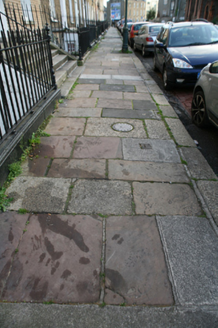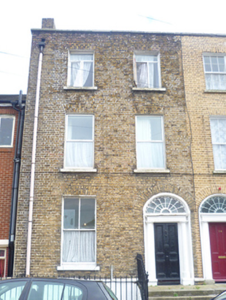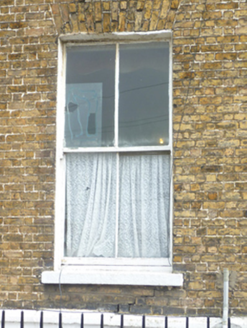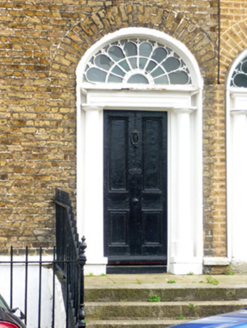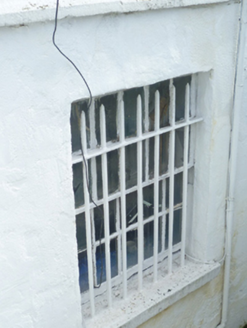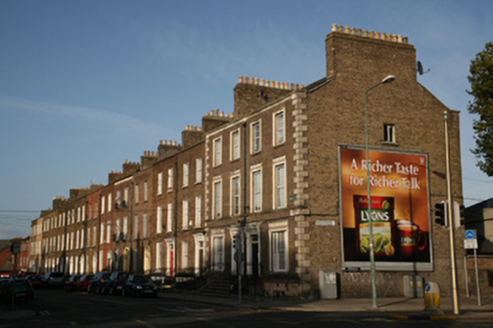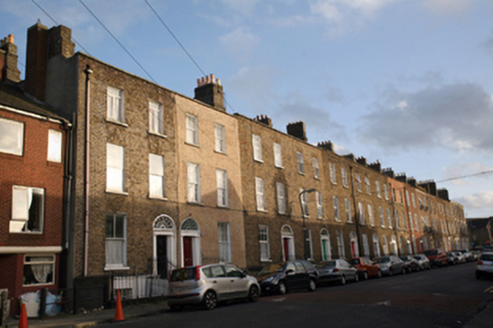Survey Data
Reg No
50010716
Rating
Regional
Categories of Special Interest
Architectural, Artistic
Original Use
House
In Use As
Apartment/flat (converted)
Date
1820 - 1840
Coordinates
316030, 235821
Date Recorded
05/09/2011
Date Updated
--/--/--
Description
Terraced two-bay three-storey house over raised basement, built c.1830, as one of pair. Now in multiple occupancy. M-profile slate roof concealed behind parapet with granite coping and pair of stepped brick chimneystacks to north gable, having clay pots to rear stack only. Cast-iron hopper with replacement uPVC downpipe breaking through parapet wall. Yellow brick walls laid in Flemish bond with double-struck pointing on painted granite plinth course over rendered basement. Rendered north gable wall rising above adjoining modern building. Gauged flat-arched window openings, flush rendered reveals, painted granite sills. Replacement uPVC windows to first floor and replacement timber to top floor. Timber sliding sash windows to ground floor and basement, two-over-two pane to former and ten-over-ten pane with iron grille to latter. Round-headed gauged brick door opening with moulded masonry surround and painted timber Doric doorcase, with original flat-panelled timber door flanked by engaged Doric columns on replacement plinth blocks supporting panelled lintel cornice and original peacock fanlight. Door opens onto shared sandstone paved platform, bridging basement area, with cast-iron bootscraper and opening onto street via five granite steps. Platform enclosed by original wrought-iron railing and decorative cast-iron corner posts on painted granite plinth wall also enclosing basement area. Original sandstone and granite paving to street with cast-iron coal-hole cover.
Appraisal
Terminating the north end of a substantial terrace, this former end-of-terrace house retains original brick pointing and together with the intact street furniture forms part of a relatively intact terrace. Its intact doorway and door, and the railings to the basement area, provide decorative interest. The latter and the retention of granite steps affords good context. Lower Sherrard Street was laid out by Thomas Sherrard, Surveyor for the Wide Street Commissioners in the 1820s. The footpath outside is unusually intact, with granite paving and coal-holes. No. 15 is a well proportioned, well presented middle-sized Georgian house which plays an important part in the intact appearance of the streetscape.
